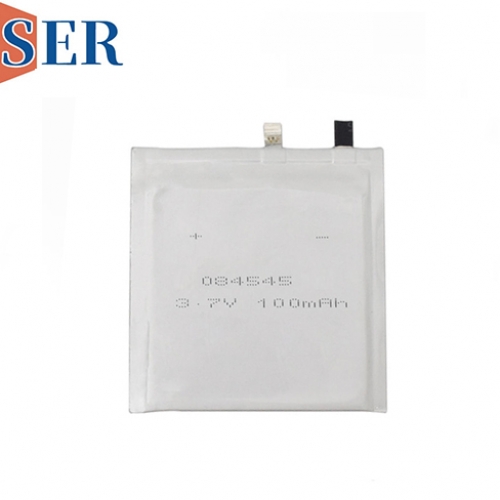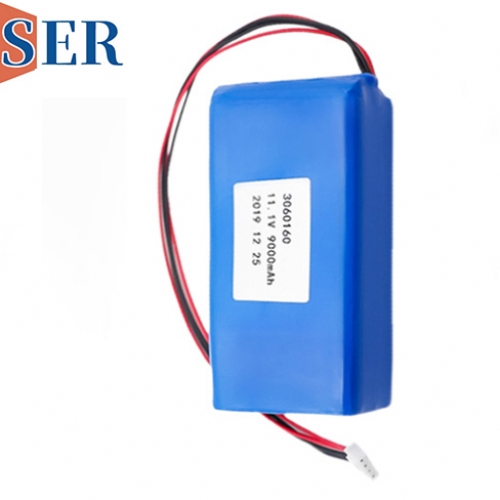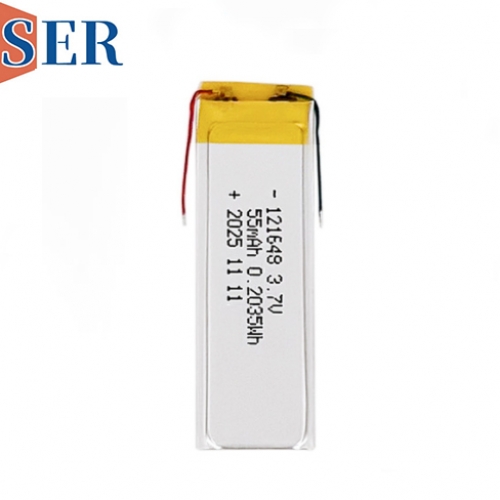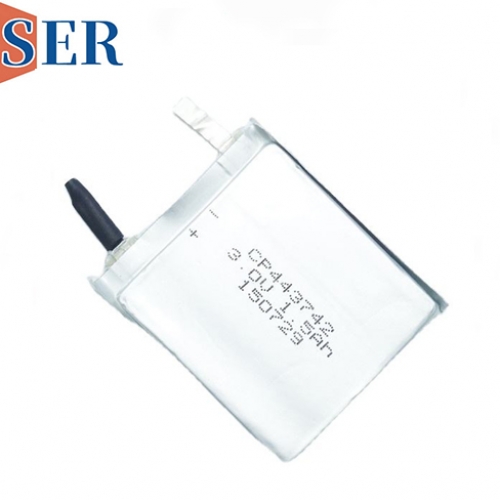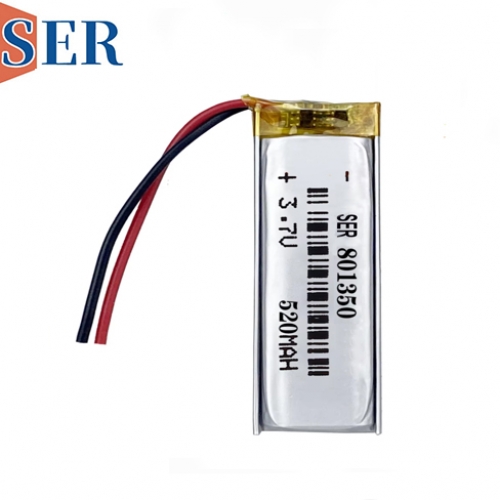Custom Ultra-thin Foldable Lipo Battery 091525 3.7V 15MAH Ultra Thin battery Flexible for Smart Card
Custom Ultra-Thin Foldable LiPo Battery 091525: A 3.7V 15mAh Flexible Powerhouse for Smart Cards

Introduction
The rise of smart cards—contactless payment cards, secure ID badges, and NFC-enabled access tokens—has created a demand for power sources that are as thin, flexible, and durable as the cards themselves. Traditional coin cell batteries, while compact, lack the flexibility required for modern smart card designs, which often incorporate antennas, chips, and sensors within ultra-slim profiles. Enter the custom ultra-thin foldable LiPo battery 091525, a 3.7V 15mAh marvel engineered specifically for smart card applications.
This article explores the technical innovations, design challenges, and real-world applications of this groundbreaking battery. We’ll dissect its specifications, manufacturing processes, safety considerations, and how it enables the next generation of flexible, power-efficient smart cards.
1. Understanding the Battery: Key Specifications
1.1 Voltage and Capacity
Nominal Voltage: 3.7V
This voltage aligns with standard lithium-ion chemistry, ensuring compatibility with low-power ICs (Integrated Circuits) used in smart cards. The 3.7V rating also simplifies power management, as most smart card chips operate efficiently within this range.Capacity: 15mAh
While 15mAh may seem modest compared to larger batteries, it is sufficient for smart cards, which typically draw microamperes of current during NFC transactions or data exchanges. This capacity supports hundreds of read/write cycles on a single charge, lasting months or even years depending on usage patterns.
1.2 Dimensions: 091525
The 091525 designation refers to the battery’s dimensions in millimeters: 0.9mm thickness × 15mm width × 25mm length. This ultra-thin profile allows the battery to be embedded within smart cards without adding bulk, maintaining a standard credit card thickness of ~0.76mm when combined with other components.
1.3 Chemistry: Lithium Polymer (LiPo)
LiPo batteries are chosen for their:
Flexibility: The polymer electrolyte enables bending without performance degradation.
Energy Density: Higher than traditional lithium-ion batteries of similar size.
Customizability: Can be shaped to fit irregular spaces within smart card designs.
2. The Need for Foldable Batteries in Smart Cards
2.1 Challenges with Rigid Batteries
Conventional batteries, such as CR2032 coin cells, are:
Too Thick: Typically 3.2mm thick, making them incompatible with smart card standards.
Inflexible: Cannot bend with the card, risking mechanical failure during flexing.
Limited Lifespan: Non-rechargeable coin cells require replacement, which is impractical for embedded smart card designs.
2.2 Advantages of Foldable LiPo Batteries
Conformability: Bends up to 180° without cracking or voltage drops.
Rechargeability: Supports wireless charging (e.g., via NFC harvesting or inductive coupling).
Longevity: With proper design, can outlast the card’s functional lifespan.
2.3 Smart Card Power Requirements
Smart cards must balance:
Low Standby Power: <1μA to preserve battery life during inactivity.
High Peak Current: Up to 20mA during NFC transactions.
Quick Charging: Minimal downtime between uses.
The 091525 ultra thin battery meets these demands through optimized electrode design and low self-discharge rates (<1% per month).
3. Manufacturing the Ultra-Thin Foldable LiPo Battery
3.1 Material Selection
Electrodes: Thin-film lithium cobalt oxide (LiCoO₂) for the cathode and graphite for the anode, deposited on ultra-thin copper and aluminum foils.
Electrolyte: A solid polymer electrolyte (SPE) or gel electrolyte to enable flexibility.
Separator: A microporous polyethylene (PE) or polypropylene (PP) layer to prevent short circuits.
Packaging: Laminated aluminum-polymer pouches for moisture and puncture resistance.
3.2 Layer-by-Layer Construction
Cathode Preparation: LiCoO₂ is mixed with a conductive binder and coated onto aluminum foil.
Anode Preparation: Graphite is coated onto copper foil.
Electrolyte Application: A thin layer of SPE or gel is applied to the separator.
Stacking: The cathode, separator, and anode are stacked in sequence.
Encapsulation: The stack is sealed in a polymer-aluminum pouch under vacuum to remove air bubbles.
Forming: The battery undergoes initial charging to form the solid electrolyte interface (SEI) layer.
3.3 Precision Engineering Challenges
Thickness Control: Each layer must be <50μm thick to achieve the 0.9mm total height.
Flexibility Testing: Batteries are bent 10,000+ times to ensure durability.
Edge Sealing: Laser welding or heat sealing prevents electrolyte leakage.
4. Flexibility and Mechanical Design
4.1 Bend Radius and Durability
The 091525 battery is designed to withstand:
Minimum Bend Radius: 2mm (compatible with credit card folding).
Cycle Life: >100,000 bends without capacity loss.
Tensile Strength: >10MPa to resist tearing during card flexing.
4.2 Integration with Smart Card Components
Antenna Placement: The battery is positioned away from the NFC coil to avoid interference.
Chip Mounting: The smart card IC is placed on a rigid section of the card, while the battery occupies a flexible hinge area.
Thermal Management: Thin graphite sheets dissipate heat during charging/discharging.
4.3 Case Study: Foldable e-Passport
In a recent prototype, the 091525 battery powered an e-passport’s biometric scanner and NFC chip. The battery’s flexibility allowed the passport to bend like a traditional booklet while maintaining reliable power delivery.
5. Safety and Reliability
5.1 Risks of Ultra-Thin Batteries
Puncture Hazards: Thin separators are vulnerable to nail penetration or card bending.
Thermal Runaway: Overcharging can cause swelling or combustion.
Moisture Ingress: Humidity can degrade the polymer electrolyte.
5.2 Safety Features
Protection Circuit Module (PCM): Integrated into the battery or card PCB to monitor voltage, current, and temperature.
Pressure-Sensitive Vents: Release gas if internal pressure exceeds safe levels.
Flame-Retardant Packaging: Uses halogen-free materials to suppress fires.
5.3 Certifications
IEC 62133: Safety standards for portable batteries.
ISO 7816: Compatibility with smart card mechanical and electrical specifications.
RoHS/REACH: Compliance with environmental regulations.
6. Charging Solutions for Smart Cards
6.1 Wireless Charging via NFC
Energy Harvesting: The NFC antenna doubles as a charging coil, capturing energy from a reader field.
Efficiency: ~30% conversion efficiency, requiring 5–10 seconds of contact to charge the 15mAh battery.
Limitations: Slow charging but sufficient for low-power smart cards.
6.2 Inductive Charging Pads
Higher Power: Dedicated charging pads deliver 50–100mW, fully charging the battery in minutes.
Alignment Challenges: Requires precise positioning between the card and pad.
6.3 Solar Charging (Experimental)
Thin-Film Photovoltaics: Transparent solar cells on the card’s surface could trickle-charge the battery.
Current Limitations: Only practical for outdoor-use cards with ample sunlight exposure.
7. Applications Beyond Smart Cards
7.1 Wearable Electronics
Smart Rings: Ultra-thin batteries power sensors and Bluetooth LE connectivity.
Medical Patches: Flexible batteries adhere to skin for continuous health monitoring.
7.2 IoT and Sensor Networks
Smart Labels: Battery-powered RFID tags for inventory tracking.
Environmental Sensors: Disposable devices monitoring air quality or soil moisture.
7.3 Consumer Electronics
Foldable Smartphones: Secondary batteries in hinge areas to extend runtime.
Augmented Reality (AR) Glasses: Lightweight power for display and connectivity.
8. Future Innovations
8.1 Higher Energy Density
Silicon Anodes: Could double capacity to 30mAh in the same volume.
Solid-State Electrolytes: Enable thinner designs (<0.5mm) with improved safety.
8.2 Self-Healing Batteries
Microcapsule Technology: Repairs minor cracks in the electrolyte automatically.
8.3 Biodegradable Materials
Plant-Based Polymers: Reduce environmental impact at end-of-life.
8.4 Integrated Energy Harvesting
Piezoelectric Layers: Generate power from card bending or tapping.
9. Conclusion
The custom ultra-thin foldable LiPo battery 091525 represents a paradigm shift in smart card design, enabling truly flexible, self-powered devices without compromising reliability. Its 3.7V 15mAh configuration, combined with bendability and wireless charging capabilities, opens doors to applications ranging from secure payments to advanced IoT sensors.
As manufacturers continue to push the boundaries of miniaturization and flexibility, batteries like the 091525 will be at the forefront of innovation, powering the next generation of intelligent, connected devices. For designers and engineers, the key to success lies in balancing performance, safety, and manufacturability—a challenge that this battery meets with remarkable elegance.
Whether in your wallet, on your wrist, or embedded in the infrastructure around you, the future of power is thin, flexible, and always on.

